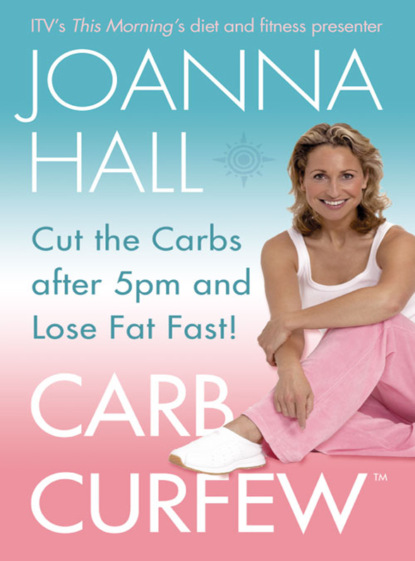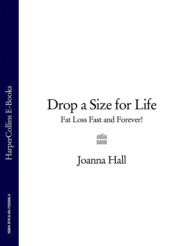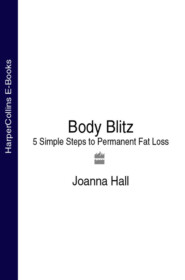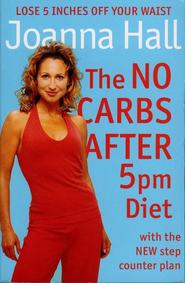По всем вопросам обращайтесь на: info@litportal.ru
(©) 2003-2024.
✖
Carb Curfew: Cut the Carbs after 5pm and Lose Fat Fast!
Автор
Год написания книги
2018
Настройки чтения
Размер шрифта
Высота строк
Поля
My clients were all very efficient at decreasing the overall fat in their diets, but because their focus was on fat their attention slipped from their carbohydrate intake – specifically bread, pasta, rice, potatoes and cereal were all being over-consumed and often in the evening as opposed to during the day when our body may burn these nutrients more effectively. A typical daily food intake looked something like this:
Breakfast: cereal with skimmed milk and banana
Lunch: large jacket potato with sweetcorn, one banana
Snack: chunk of bread with fruit jam
Dinner: pasta with homemade tomato sauce, brown bread roll
Now at first glance this seems to be a pretty healthy diet and to a certain extent it is, however what it lacks is essential fats, a minimum of five portions of fruit and vegetables, protein and suitable portion sizes. The classic mistake is that too many calories were being consumed. So while fat intake was decreased and in fact very low, the consumption of calories through starches was increasing.
Total calorie intake does count. So while we may be very good at reducing the amount of fat in our diet, if the total number of calories consumed is higher than the amount of calories being burnt off through exercise and activity, then weight gain can actually occur regardless that the source of calories were ‘fat-free’.
Have a look at the table below to see the calorie content of some typical starch foods – this will help you to see how excess calories from starch might be contributing to your body fat.
Calorie Content of Starch Foods
What Are the Benefits of Using the Carb Curfew?
As I explained at the beginning of the chapter, you can eat starch in moderation at breakfast, lunch and in your mid-afternoon snack but you cannot eat it in your evening meal. By operating the Carb Curfew you will:
Help decrease your overall calorie intake.
Help decrease your overall starch intake. Excess starch stimulates the production of serotonin in the brain, which can make us feel more sluggish. This in turn directly stimulates us to reach for the instant high of a sugar fix such as chocolate, sugary sweet cakes, biscuits and processed snacks.
Beat your sugar cravings. Eating the right amounts of protein and starch at lunchtime will fuel you with energy and brainpower all afternoon.
Serotonin and Dopamine
Too great a dependence on starchy carbohydrates, whilst vital for storing energy in our muscles, can make us feel lethargic due to the production of the brain neurotransmitter serotonin. This is why we often experience a slump of energy immediately after our lunch – we have consumed too many starches at lunchtime. Conversely, proteins consumed in the right amount increases the release of the hormone-like substance dopamine, which makes us feel more alert, increases our ability to concentrate and helps to regulate our mood.
Why Does the Carb Curfew Work?
The Carb Curfew works because:
1. By eating your starch at breakfast and lunch, it means you consume more energy-providing nutrients during the day. This will give you more physical and mental energy to meet the daily demands and pleasures of life.
2. It allows you to have a lighter meal in the evening based on protein and fruit and vegetables. This helps you achieve a healthier balance of nutrients, as without the presence of bread, pasta, rice, grains and potatoes you will really need to fill up on fruit and vegetables.
3. Eating less in the evening will make you hungry for a lovely healthy breakfast – this will fuel you with energy right through the day.
The Low-Down on Carbohydrates
Should We Eat Carbohydrates?
Yes, carbohydrates form the backbone of our diet. Fruit and vegetables should be eaten at each meal; starches can be eaten at breakfast and lunch but not in your evening meal, and processed sugars should be kept to an absolute minimum. It is important to remember that the different types of carbohydrates are treated by the body in different ways. The trick to successful weight and body fat loss is to make sure you are eating the right carbohydrates at the right time of the day, so your body receives the right type of carbohydrate when it needs it. This will help you achieve and maintain your weight and body fat goals, you will have more energy during the day, and most importantly, you will minimize your hunger pangs.
To help you understand how the Carb Curfew works, the following summary shows you when to eat what carbohydrate foods for optimum energy and weight loss.
Carbohydrates
Starches
Food examples: all breads, pasta, rice, potatoes, sweet potatoes, cereal, oats, bulgur wheat, millet
When to eat: breakfast, lunch and afternoon snack – you are not allowed to consume in mid-morning snack or after 5 p.m.
Fruit
Food examples: apples, nectarines, melons, raspberries
When to eat: all meals and snacks, especially in evening meal
Vegetables
Food examples: peppers, broccoli, carrots, mushrooms
When to eat: all meals and snacks, especially in evening meal
Processed sugars
Food examples: sweets, chocolates, cakes, biscuits
When to eat: minimal consumption
What is the Glycaemic Index?
Traditionally carbohydrate foods, which provide the main fuel base for our bodies, are classified as simple or complex carbohydrates. Simple carbohydrates such as sugars, some fruits, cakes and biscuits provide a quick increase in blood glucose levels whilst complex carbohydrates such as brown rice, porridge oats and wholegrains raise blood glucose at a slower rate and keep blood glucose levels more stable for longer. The rate at which our blood sugars change with eating different types of carbohydrates is called the glycaemic index (GI).
The concept of GI carbohydrates is fairly new and is particularly recommended for individuals who may be sensitive to swings in energy. The text below illustrates the GI of some common carbohydrate foods. Pure sugar receives a value of 100, and other sugary foods and starches are compared to that. Later in the chapter, to help you optimize your energy levels, we’ll look at when it is best to eat which GI carbohydrates.
Glycaemic Index Carbohydrates
Вы ознакомились с фрагментом книги.
Приобретайте полный текст книги у нашего партнера:
Приобретайте полный текст книги у нашего партнера:











